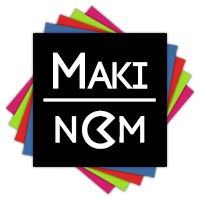The Game section contains the settings related to the game (e.g. game states, languages) and that are used in your game world (e.g. formulas, camera positions, scene objects).
Game Settings #
The Game Settings sub-section contains the basic game settings, e.g. the chance random range (default 0-100), raycast settings, initial sound/music channels and initial global variables.
The game settings also allow you to easily change asset sources for the complete project.
Unity Wrapper #
The Unity Wrapper feature allows you to replace standard Unity functionality with custom implementations.
You can use it to implement 3rd party functionality for spawning and destroying game objects, scene loading and random number generation.
Performance Settings #
The Performance Settings let you define data list pooling options. This can help improve the performance of your game.
Learn more in the performance optimization documentation.
Game States #
The Game States sub-section defines the game states that are available. Game states are mostly used as conditions for starting machines, displaying HUDs and in schematics.
You can learn more in the game states documentation.
Languages #
The Languages sub-section defines the languages that are available. You can also export and import languages here.
Learn more in the languages documentation.
Formula Types #
The Formula Types sub-section defines the formula types that are available.
Formula types are used to organize and filter formulas in the Makinom editor.
Formulas #
The Formulas sub-section defines the formulas that are available. Formulas are defined in a node-based editor and are used to calculate a float value.
Formulas are useful if you often need to calculate a value, e.g. using object variables containing attributes of player and enemies to calculate the attack damage.
Formulas, like schematics, are created using the node editor.
Camera Positions #
The Camera Positions sub-section defines the camera positions that are available. Camera positions are used in schematics and Camera Event components to place or mvoe the camera to defined positions using a target game object.
Camera positions are optional, you can also place and move the camera as you’d move any other game object.
Music #
The Music sub-section defines the music that is available. Music is used by schematics and Music Player components to change the background music of your game.
Learn more in the audio and music documentation.
Scene Object Types #
The Scene Object Types sub-section defines the scene object types that are available. Scene object types are used to organize and filter Scene Objects and add additional type information to them.
Learn more in the scene objects documentation.
Scene Objects #
The Scene Objects sub-section defines the scene objects that are available. Scene objects are used to add information to game objects using a Scene Object component.
Scene objects define the name and description of game objects. They can also add portraits and object variables to game objects.
This information can be used by HUDs (e.g. displaying the name of an interaction) and schematics (e.g. name and portraits of a dialogue’s speaker).
Learn more in the scene objects documentation.






